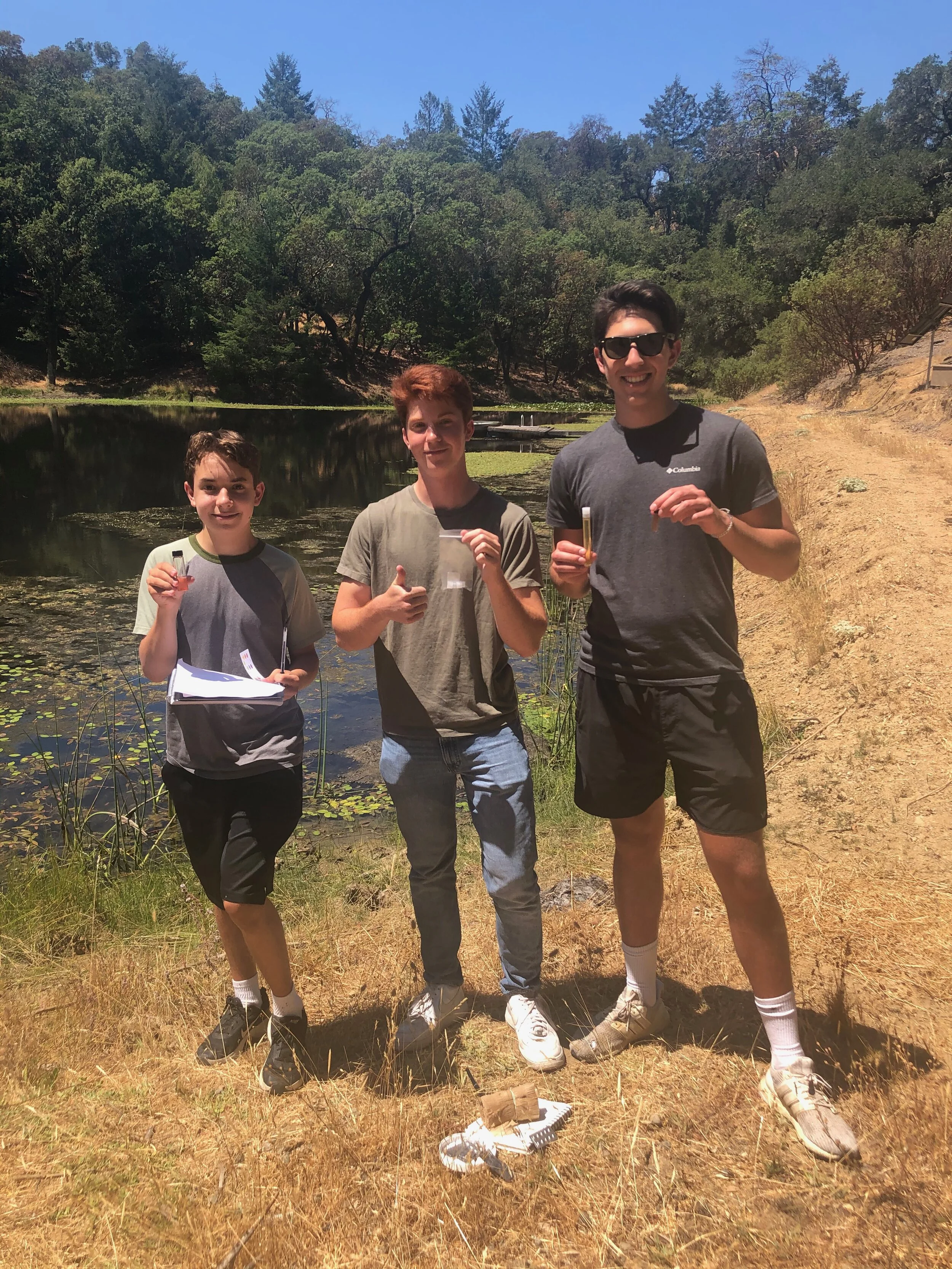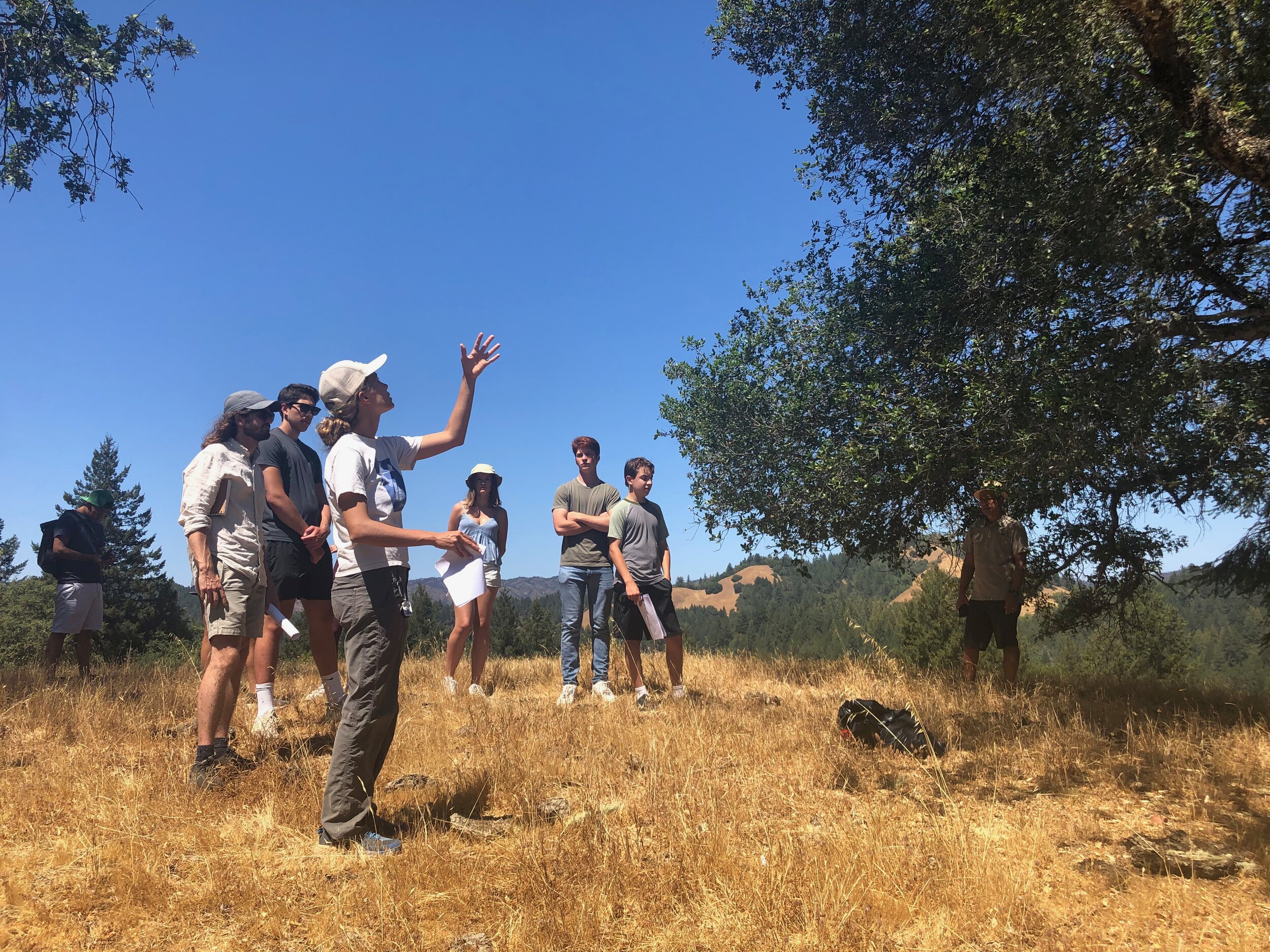Adapting to Climate Change in Sonoma County: Our Visit to Teravana
By Aidan Gossett, WELLKIND Forestry Intern
Aidan Gossett was an intern for WELLKIND Forestry during our summer 2021 session, exploring the effects of climate change in Sonoma County and other local environmental issues.
My name is Aidan Gossett, and I’m an intern for WELLKIND Forestry. This summer, my fellow interns and I have gone on field trips to various restoration sites. Today, I will be talking about our trip to Teravana, which is privately-owned land in Cazadero, Sonoma County, California.
What We Did
From the San Rafael Transit Center, it was about a two-hour drive up to Teravana. Along the way, we saw rolling hills filled with vineyards and even the Russian River. As we passed by the river, we noticed that it looked significantly lower than usual, due to the severe drought that California is in.
We arrived in Teravana at 10:00 AM and began with introductions and brief talks about the site. The owner of the land, Suvas Vajracharya, began by telling us about why he bought it. He said that he was motivated by spirituality and that he wanted to provide a place for other people to learn about how to become more connected with the Earth. He explained that he wanted to combine spirituality with ecology and create a healthy ecosystem for the incoming guests.
After our talk with Suvas, we went over to a nearby pond to test the water. We concluded that it was fairly good, but definitely not great—it was lacking in vital nutrients. The nitrate level at the dock, which was located in the middle of the pond, was three parts per million. The nitrate level at the outflow was four parts per million. Ideal nitrate levels would’ve been somewhere between five to 10 parts per million.
After a quick break for lunch, we visited various sites on the land. We went into a field near a ridge and discovered how the ridge allows for natural runoff to occur. Our guide explained that when water flows down ridges, it forms these small cutout “valleys” where the water flows due to erosion over time.
Next, we visited a small redwood forest on the land, which was very interesting considering most of the land was inhabited by oaks and grasses. The most likely reason for the redwood forest was the fact that it was the highest part of the land and close to the ocean. Fog from the ocean creeps over the hills and catches on the redwood needles, falling to the ground where they can soak it up.
We finished our visit by spreading chicken manure around the roots of an oak tree. We laid down a ring of chicken manure about three inches wide and one inch thick around the critical root zone of the tree. The critical root zone can be found by determining where the majority of leaf mass of a tree ends. This is usually around three-fourths of the way from the trunk to the tree’s outermost leaves. We spread chicken manure around the tree to fertilize it because the trees are lacking in vital nutrients due to the drought. Runoff brings nutrients to trees during normal years, but since there is a lack of runoff, humans have to get involved in fertilizing trees.
The Main Issues
The biggest issue threatening Teravana and sites like it is the drought that California is currently experiencing. Many of the trees are beginning to show the signs of death due to a lack of hydration. The needles of the redwood trees were brown and dry, and lichen was forming on the oaks. This dehydration is due to the lack of rainfall that Sonoma county is experiencing. As of June 25th, 2021, Santa Rosa had only 38 percent of its average annual rainfall. This means that it has rained 12.86 inches out of the typical 34 inches. This average has been calculated based on the previous 30 years’ rainfall. On top of this, the soil in Teravana is painfully dry and loose, which isn’t ideal for healthy plant growth.
How to Help
The best way for people to help resolve these issues is by reducing their water consumption. If everyone can reduce the amount of water that they use, we can lessen the impact of the drought. For example, we can take shorter showers, install drip irrigation for our gardens, and use the dishwasher less (only when extremely necessary).
Also, we can vote people into office that won’t be lobbied by corporations that consume the vast majority of our water. One such example of this is a politician local to Marin County, Jared Huffman. Huffman receives money from cattle ranchers and argues for their cause in Congress. But one pound of beef requires roughly 1,800 gallons of water!
Conservation and informed voting are just a few of the ways that we can lessen the effects of the drought that plagues California. For more information, you can check out the Forestry Program page on our website.
Further reading
For more techniques, go to this website.
For more information on Jared Huffman’s role in cattle ranching, visit this website. For more information on the impacts of cattle ranching on our water, go to this website.


